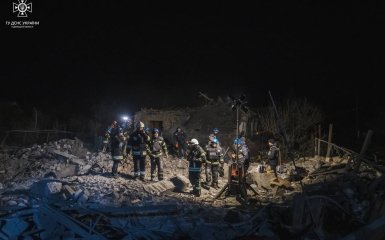On January 6, the Russian occupiers massively attacked the Pokrovsky district of Donetsk region with S-300 missiles. The Russians hit residential buildings, and bodies are still being recovered from the rubble.
Rescuers continue to clear the rubble after the Russian attack
As of the morning of January 7, in Pokrovsk, at the site of two destroyed private houses, rescuers rescued one person and recovered the body of a dead woman.
Emergency and rescue operations are ongoing to search for four people, including two children.
In the village of Rivne, the body of a dead child was removed from the site of a destroyed house. Emergency services are looking for five more people, including two children.
Thus, the number of dead increased to 13.
During the liquidation of the consequences of shelling, rescuers dismantled 68 tons of destroyed building structures.
Strike of the Russian army in the Pokrovsky district
According to the information of the head of the Donetsk Regional military administration (RMA), Vadym Filashkin, the Russian occupiers shelled the Pokrovsky district with S-300 guided anti-aircraft missiles, delivering critical strikes on Pokrovsk and Rivne to Myrnograd communities.
On the evening of January 6, RMA reported that 11 people had died, including five children.
President Volodymyr Zelenskyy also reported the death of "more than ten people."
Zelenskyy noted that the Russians' attack was just on ordinary residential buildings, on private houses. But he said that all the wounded are currently receiving the necessary assistance.
Russia must feel — always feel — that none of these strikes will pass without consequences for the terrorist state. We have to ensure this with our strength, our own defense and political capabilities, the head of state emphasised.
More on the topic
- Category
- Ukraine
- Publication date
- Додати до обраного


